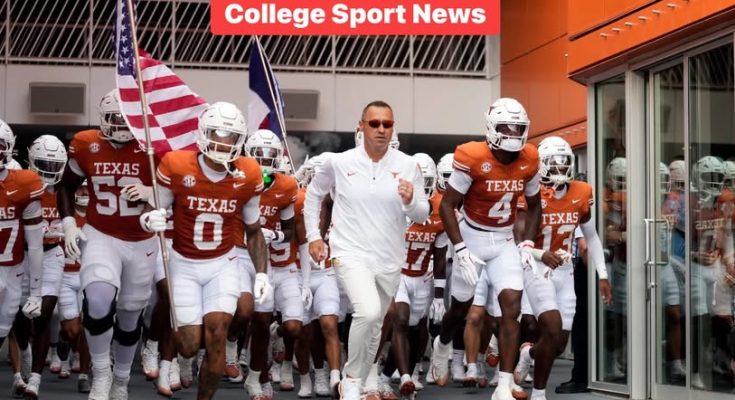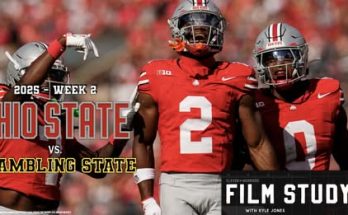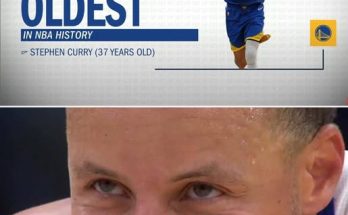The recruiting process in college football has always been full of drama, shifting loyalties, and unexpected twists, and the case of a 2027 four-star Oregon commit admitting he has “always had a thing for Texas” is a perfect example of how verbal pledges often come with more nuance than fans initially realize. While the commitment to the Ducks is significant, it is important to remember that signing day is still far away, and in today’s recruiting landscape, things can change in the blink of an eye. Relationships, opportunities, campus experiences, and long-standing personal connections all play roles in shaping the final decision of a highly touted prospect, and this particular situation highlights the tension between what a player feels now and what he may ultimately decide when the time comes to put pen to paper.
The fact that a prospect has already committed to Oregon tells us that the Ducks did a tremendous job early in the recruiting process. Oregon has built a strong reputation for identifying talent early and making recruits feel like a priority, and for many players, being wanted and pursued with intensity matters more than anything. Oregon’s coaching staff has been among the best in the nation at making players envision themselves in Eugene, pointing to the program’s facilities, national profile, and ability to develop talent for the NFL. For a four-star athlete to jump on board early is not surprising, especially given how Oregon has established itself as one of the premier destinations in the West. However, the recruit’s comment about Texas reveals that there are still emotions and considerations at play that could influence the trajectory of his decision.
When a player says he has “always had a thing for Texas,” that usually goes beyond just football. The Longhorns brand is unique in the sport, carrying a level of tradition, visibility, and cultural identity that resonates far outside the borders of the state. Texas has long been the dream school for countless athletes, even those who grow up hundreds or thousands of miles away. The burnt orange, the Longhorn logo, Darrell K Royal–Texas Memorial Stadium, and the history of producing great players all combine to create an aura that recruits cannot ignore. The emotional attachment is strong, and even for those already committed elsewhere, it often lingers in the background as signing day approaches. For the Oregon commit, Texas represents more than just another option; it represents the school he has admired from a distance, one that may still sway him if the opportunity and timing align.
Recruiting experts and fans alike know that commitments before signing day are never absolute. In fact, coaches often tell their players to “recruit until they sign,” a mantra that emphasizes the importance of not relaxing after a verbal pledge. Rivals, 247Sports, and On3 consistently track the ebbs and flows of these recruiting battles, noting how programs continue to contact committed players until the very end. The Oregon commit’s openness about still building relationships shows that he is not closing doors, which makes perfect sense given that he still has months to weigh all his options. For many players, maintaining communication with multiple programs provides leverage, reassurance, and a safety net in case circumstances change.
The landscape of college football has shifted dramatically with the arrival of NIL opportunities, and this adds another layer of complexity to situations like this one. Texas, with its massive alumni base and strong donor network, has become one of the most powerful programs in terms of NIL. Recruits see the potential financial opportunities that come with being a Longhorn, and that can weigh heavily on their decisions. Oregon, of course, has its own advantages in NIL through its connections to Nike and Phil Knight, but the competition is fierce, and each program’s ability to put together attractive packages could be the deciding factor down the stretch. For a recruit who has admired Texas for so long, the combination of emotional attachment and financial opportunity could become difficult to resist.
Another factor to consider is the relationships being built with coaching staffs. When recruits say they are “still building relationships,” it often means they are in the phase of exploring how well they connect with different position coaches, coordinators, and head coaches. These relationships can be just as important as facilities or program history because a recruit wants to know that the people guiding his career truly care about him and his development. Oregon has clearly built a strong early bond to secure the initial commitment, but Texas has the chance to keep chipping away. The coaching staff in Austin has been relentless in its pursuit of top talent, and they know how to play the long game. If Texas can show the recruit that he would be a cornerstone of their program, that sense of belonging could gradually override his early pledge to Oregon.
Recruiting is also about family and location. While Oregon offers a West Coast environment with modern football culture, Texas provides the allure of football in its purest form—big stadiums, passionate fans, and the chance to play in a state that lives and breathes the sport. For some families, proximity matters because they want to watch their son’s games in person. For others, the cultural fit of a program and the comfort of being in a familiar environment take priority. If this recruit has ties to Texas or has long admired the state’s football tradition, his family’s voice could ultimately play a role in nudging him toward the Longhorns, even if his current commitment points elsewhere.
History tells us that verbal commitments can change dramatically as signing day approaches. There have been countless stories of recruits flipping late in the process, sometimes even on signing day itself. Fans remember the images of hats on tables, last-minute announcements, and shocking decisions that leave one fan base elated and another devastated. Programs like Texas have been on both sides of that equation, losing players late but also pulling off surprise flips that strengthen their classes. Oregon, too, has managed to hold on to big commitments under pressure, but they know the work is far from over once a player gives them his word.
The fact that this particular prospect is a four-star talent makes the battle even more intense. Four-star recruits often project as impact players at the college level, and programs treat them as priorities because they can change the trajectory of a recruiting class. Losing such a player late in the process would be a blow to Oregon, while flipping him would be a major victory for Texas. This tug-of-war is exactly what makes recruiting such a compelling storyline in college football, and fans will be watching closely to see how it develops.
For the recruit himself, the decision comes down to trust, comfort, and vision. Oregon offers a chance to be part of a program that has consistently competed for conference titles and College Football Playoff spots. The Ducks have a track record of producing NFL players, and Eugene provides a unique college town atmosphere with one of the most passionate fan bases in the West. On the other hand, Texas provides the opportunity to join one of the most iconic programs in the country, compete in the SEC against elite competition, and potentially play under the brightest lights in the sport. Each path comes with its own rewards, and the decision will likely weigh heavily on the recruit’s mind in the months to come.
What makes his comment about Texas so intriguing is the honesty behind it. Many recruits keep their preferences quiet, sticking to the narrative that they are fully locked in after committing. For this player to openly acknowledge his admiration for Texas suggests that the door is very much still open. It also shows the maturity of a young athlete who understands that recruiting is a process, not a one-time event. By continuing to build relationships, he keeps his options alive and allows himself the chance to make the best choice when the time is right.
National signing day may feel like a long way off, but in the world of recruiting, time flies. Coaches will continue calling, visiting, and texting. Programs will host official visits, roll out presentations, and do everything they can to make their case. Fans will speculate, analysts will make predictions, and reporters will track every development. For now, the Oregon commit’s heart seems divided between the Ducks, who earned his pledge, and Texas, which has always held a special place in his mind. Where he ultimately lands will depend on how those relationships, opportunities, and emotions evolve between now and the moment he signs his letter of intent.
Until then, the story serves as a reminder of the unpredictable and thrilling nature of college football recruiting. Commitments can be strong but rarely permanent, and the influence of tradition, family, NIL, and relationships ensures that every decision has layers of complexity. For Oregon, the challenge is to maintain its bond and convince the recruit that Eugene is the best long-term fit. For Texas, the task is to turn his long-standing admiration into a commitment that sticks. And for fans, it is yet another recruiting drama to follow closely, knowing that the final decision may not be made until the ink dries months from now.



